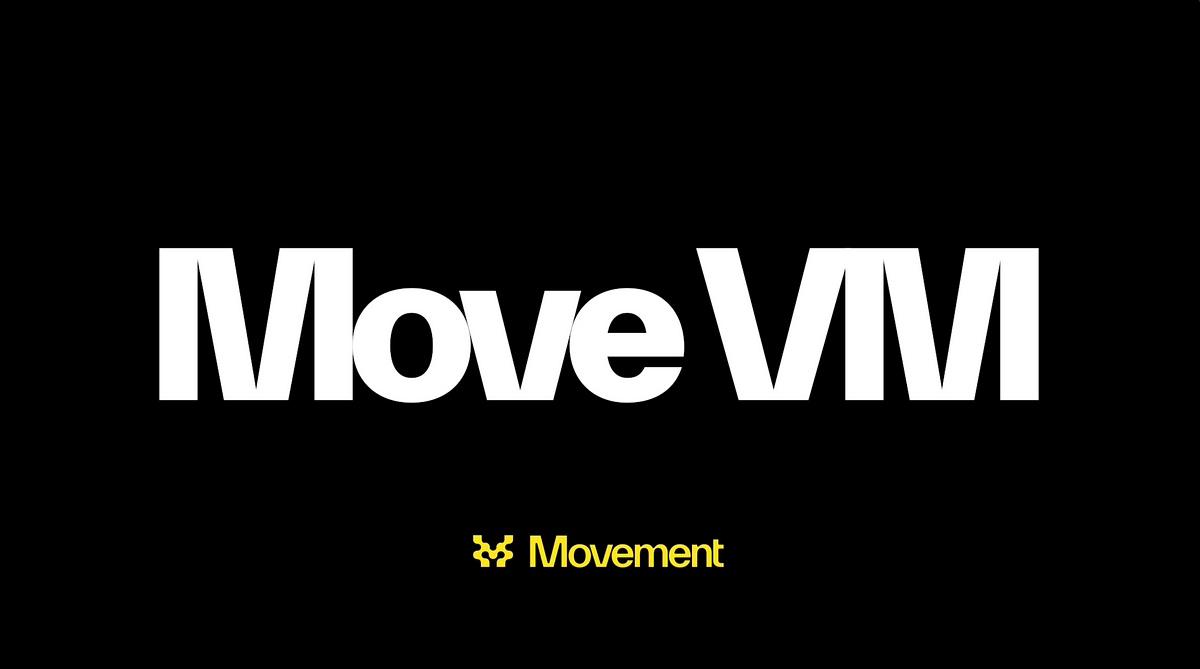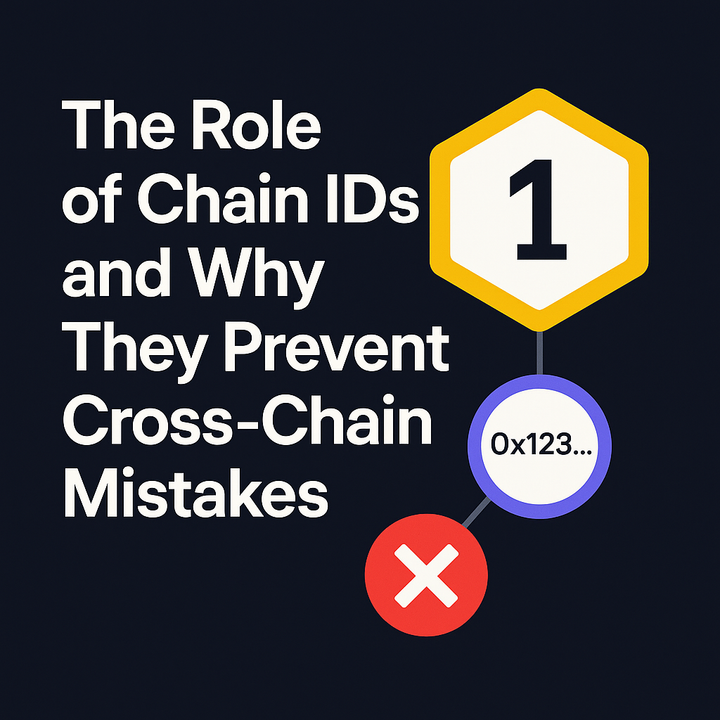The Modular Mindset: Why Movement Labs Is Building Infrastructure for Builders

Introduction
For the better part of the last decade, the blockchain industry has revolved around building vertically integrated networks monolithic chains that bundle execution, consensus, settlement, and data availability into a single layer. Ethereum, Solana, Avalanche, and even Bitcoin all reflect this architectural philosophy: everything lives on the same base chain, tightly coupled and deeply interdependent.
This model worked until it didn’t.
As user demand and developer activity surged, these monolithic networks began to buckle under their own weight. Gas fees soared, throughput stalled, and composability became increasingly complex. For developers, launching a new decentralized application often meant inheriting the limitations of the chain they built on. They had no say in how consensus was handled, where data was stored, or how execution could scale. Creativity was confined to the boundaries of the chain’s infrastructure.
Out of this friction, a new architectural paradigm began to take shape: modular blockchains.
In a modular stack, core blockchain responsibilities execution, settlement, data availability, and consensus are unbundled and handled by specialized layers. This decoupling opens the door to greater flexibility, horizontal scalability, and infrastructure composability. Builders are no longer boxed into a one-size-fits-all chain. They can select the best-in-class components to assemble a tech stack tailored to their dApp’s specific needs.
Movement Labs is one of the leading pioneers building for this modular future. But while many focus on scalability, Movement is focused on something deeper: developers. It’s not just building infrastructure for blockchains,it’s building infrastructure for builders.
By leveraging the safety and parallelizability of the Move programming language, integrating with leading modular components like Celestia and EigenLayer, and rolling out an ecosystem of dev-first tools, Movement Labs is betting big on the future of Web3 being modular, composable, and developer-driven.
This is more than just an infrastructure story. It’s a philosophical shift, a belief that giving developers more freedom, more safety, and more flexibility will lead to the next generation of innovation in crypto.
In this article, we’ll explore how Movement Labs is redefining what it means to build on-chain, why modular infrastructure is more than a scaling solution, and how a developer-first approach is setting the foundation for a more expressive and inclusive Web3.
The Rise of the Modular Blockchain Stack
The concept of modularity isn’t new in computer science. In traditional software engineering, modular design has long been hailed for promoting flexibility, reducing complexity, and allowing different components to evolve independently. In the blockchain world, however, it’s only in recent years that this principle has begun to gain serious traction.
Historically, blockchains were built as vertically integrated systems monolithic by default. A single chain would manage execution (smart contract logic), settlement (state finality), consensus (block validation), and data availability (record storage and verification). This tight coupling meant that improvements in one area often came at the cost of another. Faster execution could lead to more expensive storage; greater decentralization could reduce throughput.
As DeFi exploded and user adoption accelerated, the limitations of monolithic architectures became increasingly clear. Ethereum gas fees regularly exceeded hundreds of dollars during network congestion. Solana, despite its high throughput, suffered performance setbacks during network outages. Builders and users alike were caught in the crossfire of trade-offs they didn’t control.
This is where the modular blockchain thesis emerged as a powerful counter-narrative.
At its core, a modular blockchain unbundles the responsibilities traditionally handled by a monolithic chain. Here’s how the stack breaks down:
- Execution Layer: Where smart contracts run and logic is computed (e.g., Movement Labs).
- Settlement Layer: Responsible for verifying state transitions and providing dispute resolution (e.g., Ethereum).
- Data Availability (DA) Layer: Ensures that transaction data is published and accessible for anyone to verify (e.g., Celestia).
- Consensus Layer: The protocol that nodes follow to agree on the order of blocks and data (often shared across layers).
By specializing each layer, modular chains allow developers to compose infrastructure like Lego blocks. Want to run a gaming dApp that needs lightning-fast execution and cheap storage? Pair a performant execution layer like Movement with a DA solution like Celestia. Need to maintain Ethereum-level security? Settle back to Ethereum via a rollup or shared security layer like EigenLayer.
This shift isn't just about scalability. It’s about developer empowerment.
With modular infrastructure, developers can design the exact environment their application needs. They can optimize for speed, cost, security, or composability without having to compromise. This is especially crucial for newer sectors like Web3 gaming, on-chain AI, and decentralized social, where monolithic chains often fall short in performance or flexibility.
Several ecosystems are already pioneering this shift:
- Celestia focuses solely on data availability, letting any rollup or appchain publish data trustlessly.
- EigenLayer introduces restaking as a new security primitive, enabling shared security across modular networks.
- Polygon Avail, NEAR DA, and others are joining the modular race to offer scalable middleware layers.
And amid these infrastructure building blocks, Movement Labs stands out by offering a highly secure and parallelizable execution layer built on the Move language purposefully designed for modular environments.
In short, modular blockchains are not just an upgrade to existing systems, they are a rearchitecture of Web3 itself. And the builders who understand how to compose these layers will be the ones shaping its next frontier.
Why Builders Need Modular Design
At first glance, the concept of modular blockchain infrastructure may seem like a backend innovation a cleaner architecture, an abstract protocol upgrade. But when you zoom in from the protocol layer to the people building on top of it, the real benefits become much more tangible.
Modular blockchains aren’t just about scalability or optimization, they’re about liberation. For developers, modularity breaks the rigid constraints of monolithic design and introduces a new era of creative sovereignty.
Here’s why that matters.
1. Flexibility to Build What You Want, Where You Want
In a monolithic world, choosing a blockchain to build on is a high-stakes, often irreversible decision. A developer launching a dApp on Ethereum inherits its high gas fees. Building on Solana locks them into Rust and Sealevel. The infrastructure is preselected immutable and it defines what’s possible.
In a modular environment, those decisions are decoupled. A developer can choose the best execution environment (like Movement’s MoveVM), pair it with the fastest DA layer (like Celestia), and still settle to Ethereum if they need the network effect or shared security.
This flexibility doesn’t just benefit performance, it invites experimentation. Gaming protocols can customize execution logic to handle thousands of concurrent player actions. DeFi builders can optimize for fast finality and composable liquidity. AI developers can train models off-chain but deploy inference agents on-chain where transparency and auditability matter.
Modular stacks allow developers to compose infrastructure that fits their app not the other way around.
2. Specialized Scaling for Specialized Apps
Not all dApps are created equal. A decentralized exchange has different needs from a social media protocol. A zkML-based AI agent will demand different infrastructure than an NFT marketplace.
In a monolithic system, everyone fights for the same blockspace. A spike in NFT minting traffic can congest the entire network, harming unrelated protocols.
With modular design, execution layers can specialize. A chain like Movement can be purpose-built to optimize Move execution, enforce resource safety, and support parallelism. Other execution layers might prioritize zero-knowledge support or customized VM logic.
This specialization isn’t fragmentation it’s precision. It allows builders to fine-tune their infrastructure according to their use case while maintaining interoperability through modular coordination layers.
3. Developer Sovereignty and Forkability
One of the most powerful and often overlooked features of modular infrastructure is sovereignty. Developers no longer have to depend on a single L1 governance body to approve upgrades, push forks, or fund ecosystem growth.
By spinning up a sovereign modular execution layer (an “appchain” or “rollapp”), a team can own its roadmap. It can introduce protocol-level changes, update VM logic, or even govern through its own DAO — all without waiting for an Ethereum Improvement Proposal or foundation-level grant.
Movement Labs embraces this by making its Move execution environment portable. Builders can fork the environment, compose it with new DA or settlement layers, or launch purpose-specific appchains all while retaining compatibility with the broader Movement ecosystem.
It’s Web3, on your terms.
4. Better User Experience Through Modular Abstraction
Modular chains don’t just empower developers, they benefit users, too.
When backend components are optimized and decoupled, frontend performance improves. Users enjoy faster transaction confirmations, lower fees, and smoother dApp interfaces. Additionally, abstracting away modular complexity via smart middleware (e.g. account abstraction, session keys, RPC routers) makes modular dApps feel as seamless as centralized ones.
Developers gain the freedom to innovate behind the scenes, while users enjoy a Web2-like UX on top. It’s a win-win.
5. Movement Labs: Built for Builders
Everything Movement Labs is building reflects this philosophy of developer-first modularity:
- The Move language provides deterministic, safe, and parallelizable smart contract logic.
- Modular integrations allow devs to deploy Move-based dApps with any DA or settlement layer.
- A suite of developer tools (MoveKit, playgrounds, templates) lowers onboarding friction.
- The protocol’s upcoming DNA Program aligns long-term developer incentives with infrastructure growth.
For builders, Movement isn’t just another chain. It’s a launchpad for permissionless experimentation with the stability and performance of next-generation modular design.
Move Language as a Builder’s Weapon
In the sprawling landscape of blockchain programming languages, few have attracted as much attention and admiration from developers and security researchers as Move. Originally developed at Meta (then Facebook) for its now-defunct Libra project, Move was designed with a core philosophy: make smart contracts safe by default.
As Movement Labs brings this language into the modular ecosystem, it isn’t just porting over an execution layer it’s unlocking a new programming paradigm purpose-built for high-assurance, high-performance, and high-parallelism blockchain applications.
Here’s why Move is a game-changer for builders.
1. Safety by Design: No More Reentrancy Nightmares
One of the most persistent attack vectors in Web3’s short history is the infamous reentrancy bug a vulnerability that has led to hundreds of millions of dollars in stolen assets. In Solidity, Ethereum’s primary language, developers are left to manually implement security measures that guard against reentrant behavior.
In Move, reentrancy is not even possible by default.
Move enforces resource-based programming, where assets (like tokens or NFTs) are treated as first-class resources that must obey strict ownership and lifecycle rules. They cannot be duplicated, implicitly shared, or accidentally destroyed.
This means:
- You can’t double-spend tokens.
- You can’t call a contract in a way that triggers nested logic unless explicitly allowed.
- You write contracts that are predictable and provable.
For developers, this is like building with armored bricks instead of glass.
2. Parallelism Through Predictable Access Patterns
Modern L1s and L2s struggle with parallel execution. To safely execute multiple transactions at once, a system must know which parts of the state each transaction touches which is nearly impossible with Solidity’s open-ended storage model.
Move solves this elegantly.
Since Move contracts declare their state access patterns and use resources with exclusive ownership, the virtual machine (MoveVM) can determine ahead of time which transactions are safe to run in parallel.
This leads to:
- Massive throughput gains (especially for DeFi and gaming apps).
- Lower latency for users.
- Predictable performance for developers.
Movement Labs is building a modular execution environment that leverages this parallelism, giving builders an edge in performance-sensitive applications.
3. A Developer-Friendly Toolchain
Writing in a new language is only as good as the tools around it. Movement Labs understands this and has gone all-in on developer experience (DX).
Here’s what the builder toolkit looks like:
- MoveKit: A suite of templates, CLI tools, and scaffolding utilities to spin up dApps quickly.
- Move Playgrounds: Browser-based environments to test, debug, and simulate contracts.
- DevNet Pipelines: Easy testnet deployments with modular backend selection (DA, settlement).
- IDE Plugins: Move support for VS Code and other popular environments.
- Audit-Ready Libraries: Battle-tested contracts and standards to accelerate development securely.
This DX-first approach lowers the barrier to entry not just for veterans of the Move ecosystem, but for Solidity devs looking to level up into safer, more scalable systems.
4. Move Is Evolving — and Movement Labs Is Leading It
While Aptos and Sui also use Move, their versions have diverged significantly from the original Libra implementation. Movement Labs aims to stay true to Move’s core values of safety, modularity, and portability, while extending its utility for a modular Web3 world.
Key innovations include:MoveVM portability: Deploy the same Move contracts across any modular stack.
- Composability with Solidity environments: Build bridges and shared state with EVM chains.
- Move-on-rollup: Leverage L2 scaling while writing in Move.
Movement is not just a host for Move — it’s evolving the Move ecosystem into something more flexible, interoperable, and robust than ever before.
5. Practical Use Cases Already Emerging
Even at this early stage, builders are already using Move on Movement Labs to develop:
- DeFi protocols with multi-layered access control and composable liquidity logic.
- GameFi platforms where assets can’t be duplicated or stolen.
- AI agents that require deterministic execution and verifiable inputs.
- NFT marketplaces with true ownership enforcement and in-protocol royalties.
Each of these use cases benefits from Move’s security and Movement’s modular design. The results? Safer apps, faster chains, and better UX all without compromising composability.
In a space where developer mistakes can cost millions and scalability is the name of the game, Move isn’t just a better language, it’s a strategic advantage. And Movement Labs is placing it into the hands of builders where it below.
The Builder Toolkit: What Movement Labs Offers
Great infrastructure is invisible. The best platforms are the ones that quietly empower developers to focus on what they do best — shipping exceptional applications. Movement Labs understands this deeply. It’s not enough to offer modular execution or a powerful smart contract language. Developers need tools. Support. Documentation. A path from concept to deployment without roadblocks.
That’s why Movement Labs has invested heavily in building a comprehensive builder toolkit — an ecosystem of resources that make developing in Move not only possible, but pleasurable.
Here’s a breakdown of what that toolkit looks like.
1. MoveKit: A Launchpad for Developers
MoveKit is Movement’s flagship SDK. Think of it as a one-stop-shop for getting your Move-based application from prototype to production.
What’s inside:
- Prebuilt smart contract templates (DEXs, NFT markets, vaults).
- Scaffolding tools to spin up modular deployments (DA + settlement + execution).
- CLI support for contract compilation, testing, and deployment.
- Integration hooks for frontend frameworks like React or Next.js.
MoveKit removes the friction of configuration and lets developers skip straight to innovation. Whether you’re building a complex DeFi protocol or a modular GameFi experience, MoveKit gives you the rails to move fast and the safety net to build right.
2. DevNet and Testnet Pipelines
Before mainnet comes experimentation and Movement makes that easy with dedicated DevNet and Testnet environments.
These networks offer:
- Reliable endpoints for deploying and testing contracts.
- Simulated modular configurations (e.g., Movement + Celestia + Ethereum).
- Support for multiple Move versions and runtime upgrades.
- Faucet and block explorer integrations for smoother dev loops.
For developers new to Move or modular design, these test environments serve as low-stakes playgrounds to learn and iterate.
3. Playgrounds and Simulators
For those just starting out, Movement provides browser-based playgrounds where developers can write, test, and simulate Move contracts without any local setup.
Features include:
- Syntax highlighting and inline type-checking.
- On-the-fly execution of functions and transactions.
- Visualization of resource flows and access patterns.
- Integrated tutorials and walkthroughs.
It’s a perfect onboarding experience for students, hackathon participants, and curious engineers transitioning from Solidity.
4. Tooling for Auditors and Advanced Builders
As the ecosystem grows, Movement is also investing in audit-grade tooling:
- Static analyzers to identify unsafe patterns or underused modules.
- Resource flow maps that show where tokens or assets can move.
- Gas profilers for optimizing performance across modular stacks.
- Contract diffing tools for version control and governance proposals.
These aren’t just nice-to-haves they’re critical for scaling large DeFi apps, DAO-governed protocols, or consumer-facing tools that need tight security guarantees.
5. Documentation and Education
Even the most elegant tools fail without great documentation and Movement Labs takes this seriously.
Their developer hub includes:
- Deep dive tutorials on Move language mechanics.
- Guides for modular stack design (how to pair with DA layers, etc.).
- Example walkthroughs: from building a multisig wallet to launching an L2.
- Community-sourced Q&A and open-source examples.
In a Web3 world where learning curves are often punishing, Movement’s commitment to education makes it an outlier.
6. Open Source and Community Contributions
Everything in the Movement developer ecosystem is open source, with transparent roadmaps and community involvement via GitHub and forums.
Builders can:
- Fork existing templates and tweak them.
- Submit PRs to core libraries or MoveKit.
- Propose governance features or modular integrations.
- Earn rewards or recognition for high-impact contributions.
In this way, Movement isn’t just a platform — it’s a participatory environment where every developer is a potential core contributor.
The Future of Modular Development: Why Movement Labs Matters Now
Web3 is evolving. The days of general-purpose Layer 1 chains dominating every vertical are giving way to a new wave of developer-first, use-case-specific infrastructure. In this modular era, the winners won’t be the biggest monoliths — they’ll be the platforms that empower the next million builders to experiment, specialize, and scale.
Movement Labs is building for that future.
It’s not just another blockchain. It’s a philosophy — a belief that developers should own the tools they build with, the logic they deploy, and the ecosystems they cultivate. It’s a platform — modular, performant, and secure, thanks to the Move language and flexible architecture. And it’s a community — one rooted in open-source values, interdisciplinary collaboration, and long-term thinking.
Let’s recap what makes Movement Labs so crucial for the modular era:
1. A Language Built for Safety and Speed
The Move language provides the most secure and predictable smart contract programming model to date. It eliminates entire categories of bugs while enabling true parallel execution. That means more robust apps, fewer exploits, and better user experiences.
2. A Modular Stack That Encourages Specialization
With Movement, developers can compose their own infrastructure: execution, settlement, data availability, and consensus — each chosen based on the needs of their app. This makes it possible to build purpose-specific rollups, sovereign appchains, and hyper-efficient verticals without reinventing the wheel.
3. A Builder-Centric Developer Experience
From MoveKit and DevNets to playgrounds and grants, Movement removes the friction from development. It meets developers where they are — whether you're a DeFi founder, AI engineer, game designer, or DAO architect — and gives you the tools to ship faster and more securely.
4. A Platform That Scales With You
Movement’s modular architecture means your project can evolve without needing to migrate chains or rewrite your logic. You can start on a shared rollup, graduate to your own appchain, and plug into any DA or settlement layer — all while keeping your Move contracts intact.
5. A Culture of Long-Termism
In a space filled with hype cycles and short-term noise, Movement Labs is building slow, steady, and right. It’s investing in infrastructure, community education, public goods, and developer sovereignty because it knows real impact is measured in decades, not months.
Conclusion
In the same way that Ethereum democratized smart contracts and DeFi redefined finance, Movement Labs is creating a new paradigm for how decentralized applications are built, deployed, and scaled. By marrying the safety of Move with the flexibility of modular infrastructure, it offers something we haven’t truly seen in Web3 until now: an environment built entirely around the needs of developers.
This is more than an upgrade. It’s a movement one that invites builders, thinkers, and dreamers to reclaim their sovereignty and shape the future on their own terms.
If you're building the next great Web3 application, Movement Labs isn't just a place to start. It’s the platform to grow, evolve, and thrive.



Comments ()